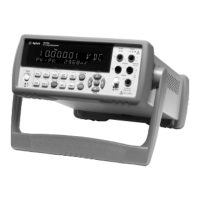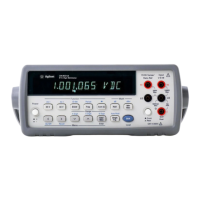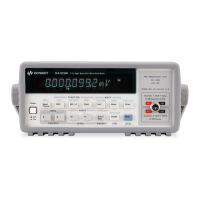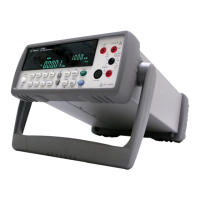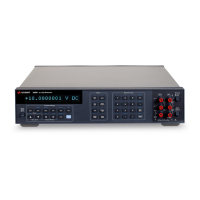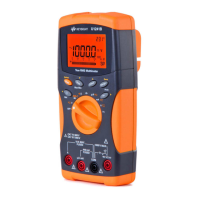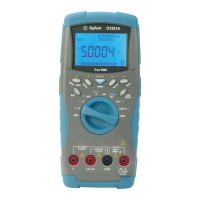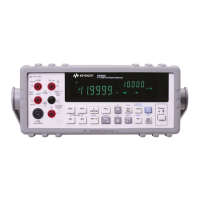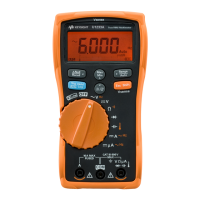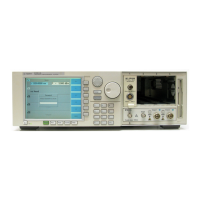34410A/11A User’s Guide 83
Features and Functions 2
System-Related Operations
The utility menu accesses the following system–related operations:
self–test, display of error conditions, calibration, and instrument
information. These features are described in the subsections that follow.
The utility menu is also used to access the following three menus:
• REMOTE I/O menu (see “Remote Interface Configuration Methods” on
page 86 for a complete description of the remote interface features).
• STORE/RECALL menu (see “Multimeter State Storage” on page 51 for a
complete description of the state storage feature).
• MISC SETTINGS menu (see “Miscellaneous Configuration Settings” on
page 62 for a complete description of these features).
Self–Test
A power–on self–test occurs automatically when you turn on the
instrument. This limited test assures you that the multimeter is
operational. This self–test does not perform the extensive self test
described below.
A complete self–test performs a series of internal tests, and takes
approximately 5 seconds to execute.
If the power–on or complete self–test fails, an error is stored in the error
queue. See the Agilent 34410A/34411A Service Guide for more information
on returning the instrument to Agilent for service.
• Following the complete self–test, the instrument issues a Factory Reset
(*RST) command.
• Front Panel Operation: Press to display UTILITY MENU. Press
as needed until SELF TEST is displayed, and press to initiate the
self–test procedure. If the test fails, the Error annunciator will light.
• Remote Interface Operation: The following command returns ”+0” if the
self– test is successful or ”+1” if it fails.
*TST?
Refer to the Agilent 34410A/34411A Programmer’s Reference for
complete description and syntax for this command.

